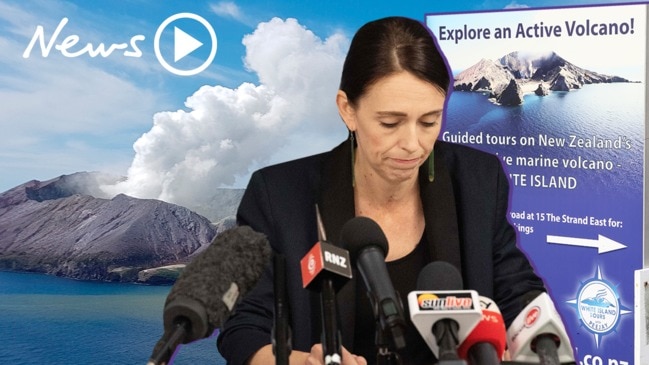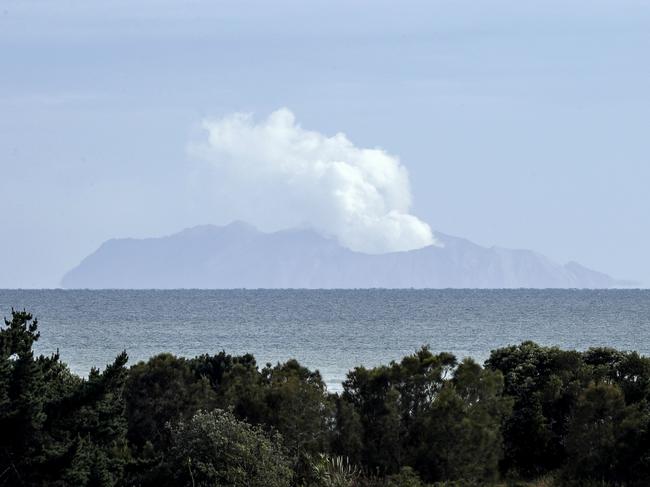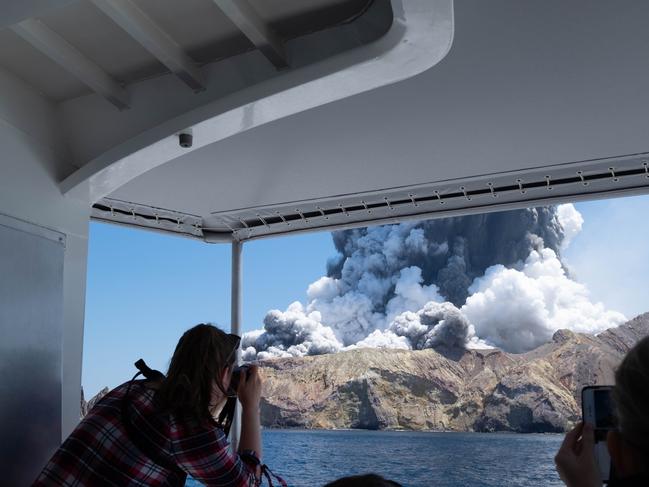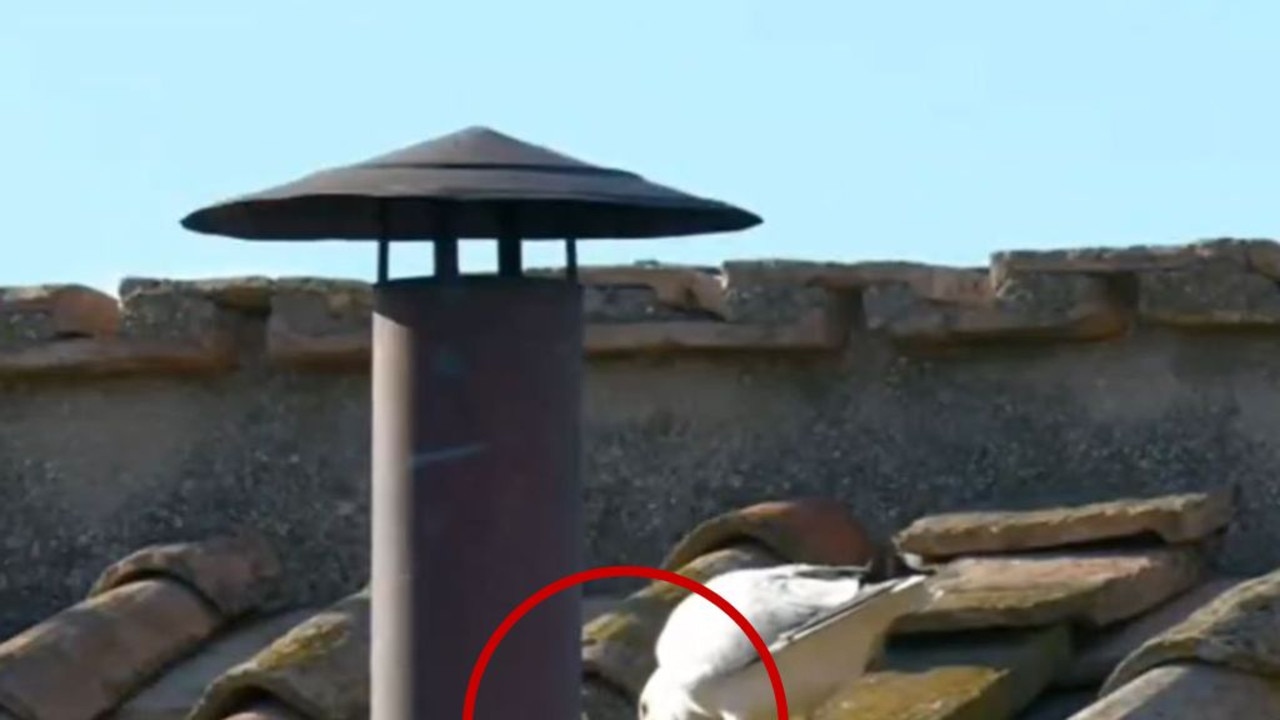White Island volcano eruption: Why the volcano blew up
New Zealand’s White Island volcano was heavily monitored by scientists, but it was also considered a “pressure cooker”. So why did it erupt when it did?
World
Don't miss out on the headlines from World. Followed categories will be added to My News.
- Hero pilot saw volcano victims ‘dead, dying and alive’
- New blow to body search as volcanic activity rises
When New Zealand’s White Island volcano erupted suddenly on Monday afternoon, a litany of violent blasts rang out, flinging ash a staggering 3.5km into the sky, and covering the volcano’s floor with hot debris, before everything went eerily quiet just minutes later.
But as New Zealand’s most active volcano, a disaster was not entirely unexpected. Experts explain why it erupted when it did.
WHAT HAPPENED
The eruption began at 2.11pm local time (11.am AEDT) and, according to GNS Science volcanologist Brad Scott, was relatively brief, lasting only one-two minutes.
In geological terms, that was both short and relatively small. But the impact was profound for anyone nearby — with ash, gas and hot cannonball-like rocks hurtling out of the crater at a speed of hundreds of metres per second and travelling kilometres into the air.

“It appears to be a phreatic eruption” said Oliver Nebel of Melbourne’s Monash University — describing a phenomenon where superheated steam and gas builds up and breaks the seal of the Earth’s surface.
“The gas that erupted would have ejected very fast — supersonic — is extremely hot and toxic,” he said.
For this sort of volcanic paroxysm, “this was probably the actual worst-case scenario,” Shane Cronin, a volcanologist and Earth scientist at the University of Auckland told National Geographic.

The eruption was labelled “short-lived”, “not particularly big” and “almost like a throat clearing kind of eruption” by New Zealand’s geoscience agency GNS Science.
“This is a case of people being in the wrong place at the wrong time,” Janine Krippner, a volcanologist at the Smithsonian Institution’s Global Volcanism Program told National Geographic. “It’s horrible when it happens, but it will continue to happen over and over again.”
WHITE ISLAND VOLCANO, A ‘PRESSURE COOKER’
The National Geographic reported that magma happens to sit really close to the surface at White Island, meaning the molten rock constantly degasses and heats up the huge supply of groundwater.
“You’ve got a really complex witches’ brew there,” Mr Cronin told National Graphic.
Apparently, this means the magma’s path to the surface can get blocked. That can lead to gases getting trapped underneath, where they keep growing and getting heated, creating a pocket of superheated elements, the National Geographic has described as a “pressure cooker”. The publication notes that the sizzling water is often trying to boil off into steam, but it remains a liquid because of the pressure.

This reportedly means that any crack in it can produce a quick and brutal decompression happening. The National Geographic reports that liquid water turns to steam, expanding its volume 1700 times quickly, adding that the expanded energy is enough to crush rocks. When the pressure at the vent is released, a decompression wave plunges down into the volcano’s throat, where it finds more pressurised water. Occasionally, the shockwave hits the magma, turning what is a steam-based explosion into a magma-driven eruption.
WAS THERE ANY WARNING?
After detecting “heightened activity” at the island, New Zealand authorities on November 18 raised the Volcanic Alert Level for White Island from Level 1 to Level 2 — the highest level before an explosion.
Because of the type of volcano and the lack of significant lava flows “many of the regular warning systems that work on other, larger volcanoes may not have been triggered,” according to Nebel.

But the volcano has a long — and perhaps predictable — history of unpredictable activity.
In 1914 ten people were killed after a landslide on the crater floor. It erupted almost continuously between 1976 and 2000.
“It does not have major eruptions, but small blasts of ash, blocks and lava are reasonably common,” said Bill McGuire, emeritus professor at University College London.
“Because the island is only a couple of kilometres across, however, visitors are close to the vent and under threat even if there is a small explosion.”
MORE NEWS
Volcano tours ‘safe’ and should continue
NZ volcano a disaster waiting to happen
WILL IT ERUPT AGAIN?
According to New Zealand authorities there has been a steady decline in activity but the volcano remains unpredictable, with minor eruptions ongoing.
They have estimated there is a 50/50 chance of a similar size eruption in the next little while.
According to Jessica Johnson, Lecturer in Geophysics at the University of East Anglia, “the volcano has displayed similar unrest in the past with no major eruptions.” “The most that the scientists can do is continue to monitor the volcano and issue information when it is available.”

SHOULD TOURISTS HAVE BEEN THERE?
“Hindsight is always 20/20, but any visit to an active volcano, or volcanic field bears a certain amount of risk,” said tourism professor Michael Lueck of the Auckland University of Technology.
“Usually it is managed by governmental bodies generally, and the tourism industry in particular.” “In the case of White Island, it falls ultimately to the operators to decide whether or not to send tours to the island on any given day.” He noted that in 2013 five climbers were killed when the Philippines’ Mayon volcano erupted and a year later Japan’s Mount Ontake erupted killing 63 hikers.
“Last year, one tourist died in an eruption of Italy’s Stromboli volcano, which has become a resort island.” The University of East Anglia’s Johnson said “it is very difficult to say whether tourism should be allowed there.” But that point may be moot if people are driven to see what is a dangerous but fascinating wonder of nature.
“White Island/Whakaari is a very beautiful and interesting destination that naturally attracts tourism,” she said.
Originally published as White Island volcano eruption: Why the volcano blew up


